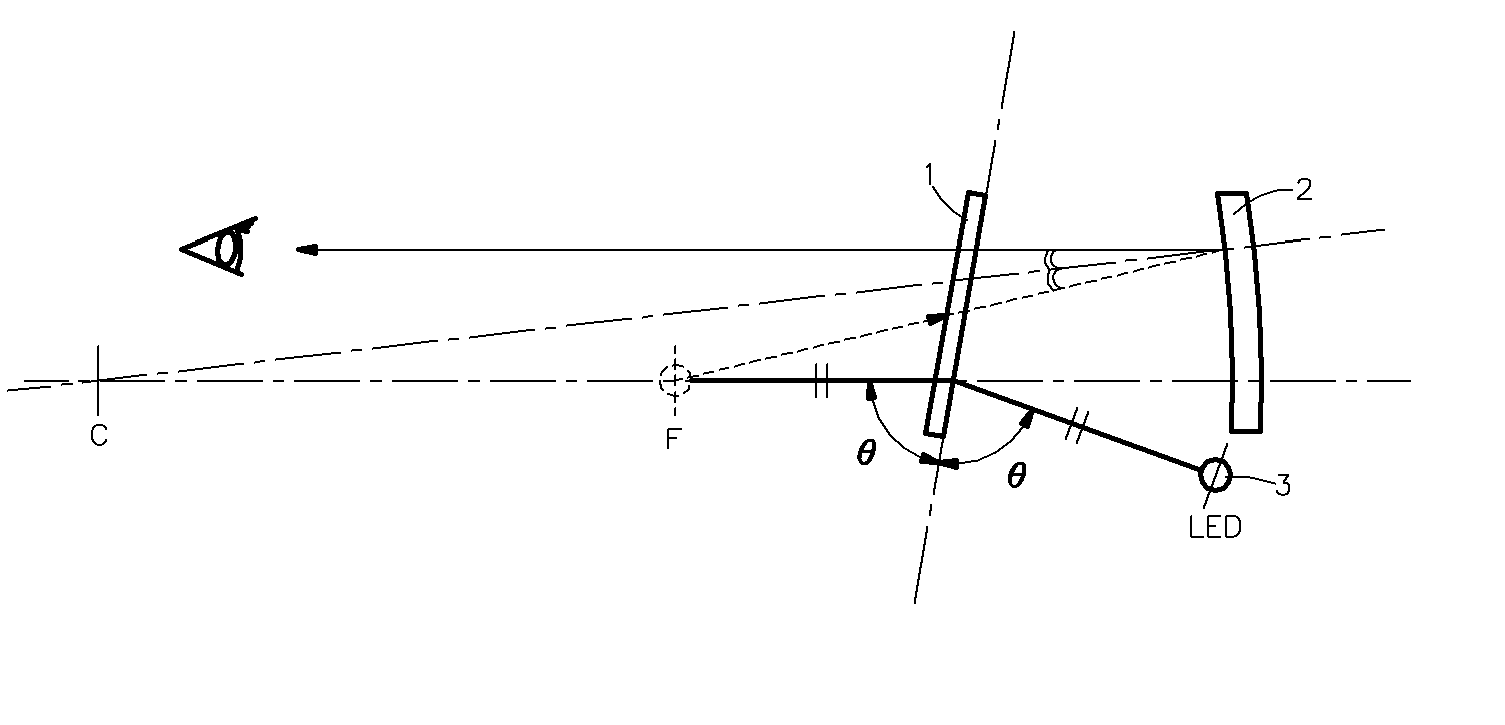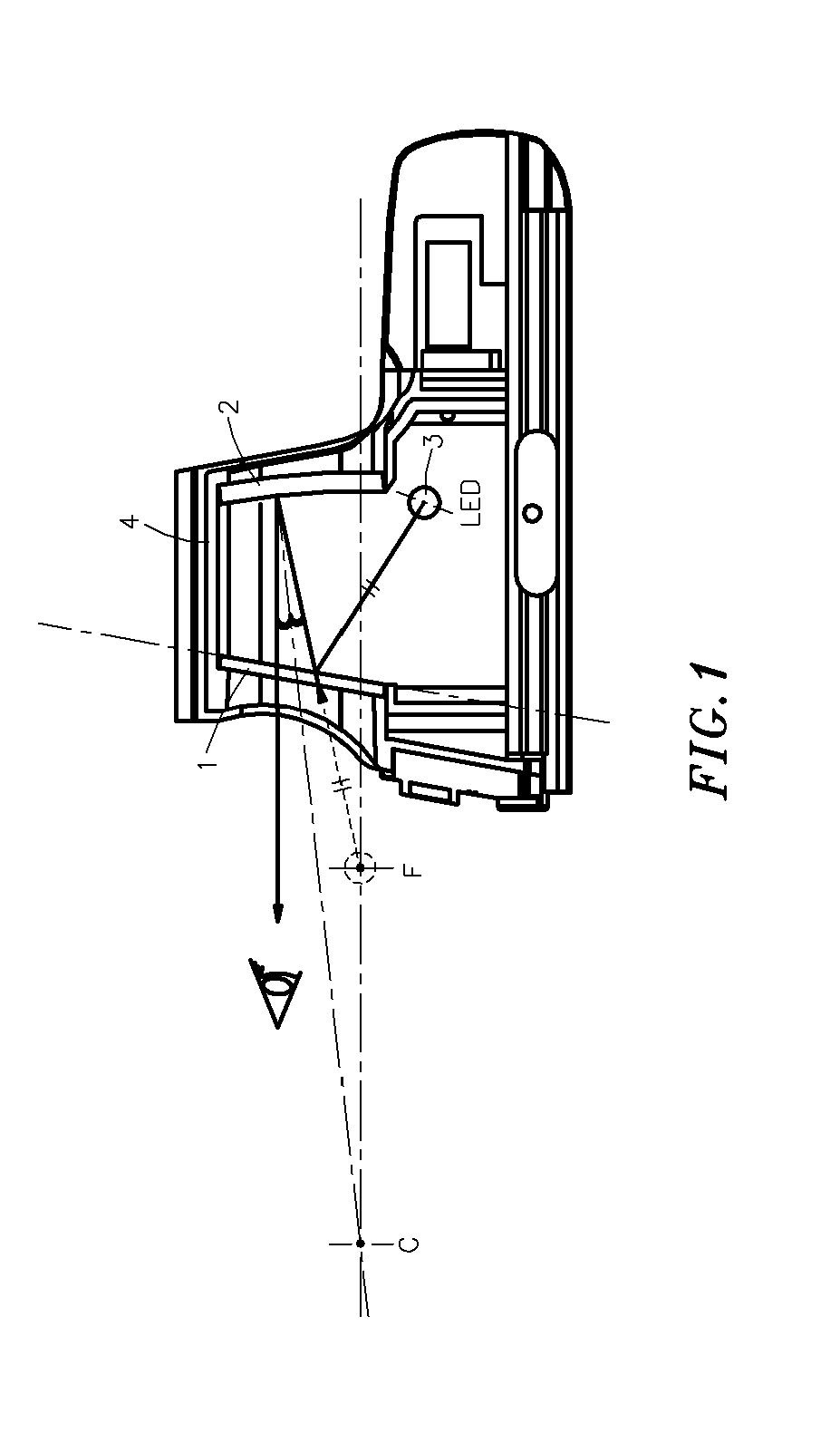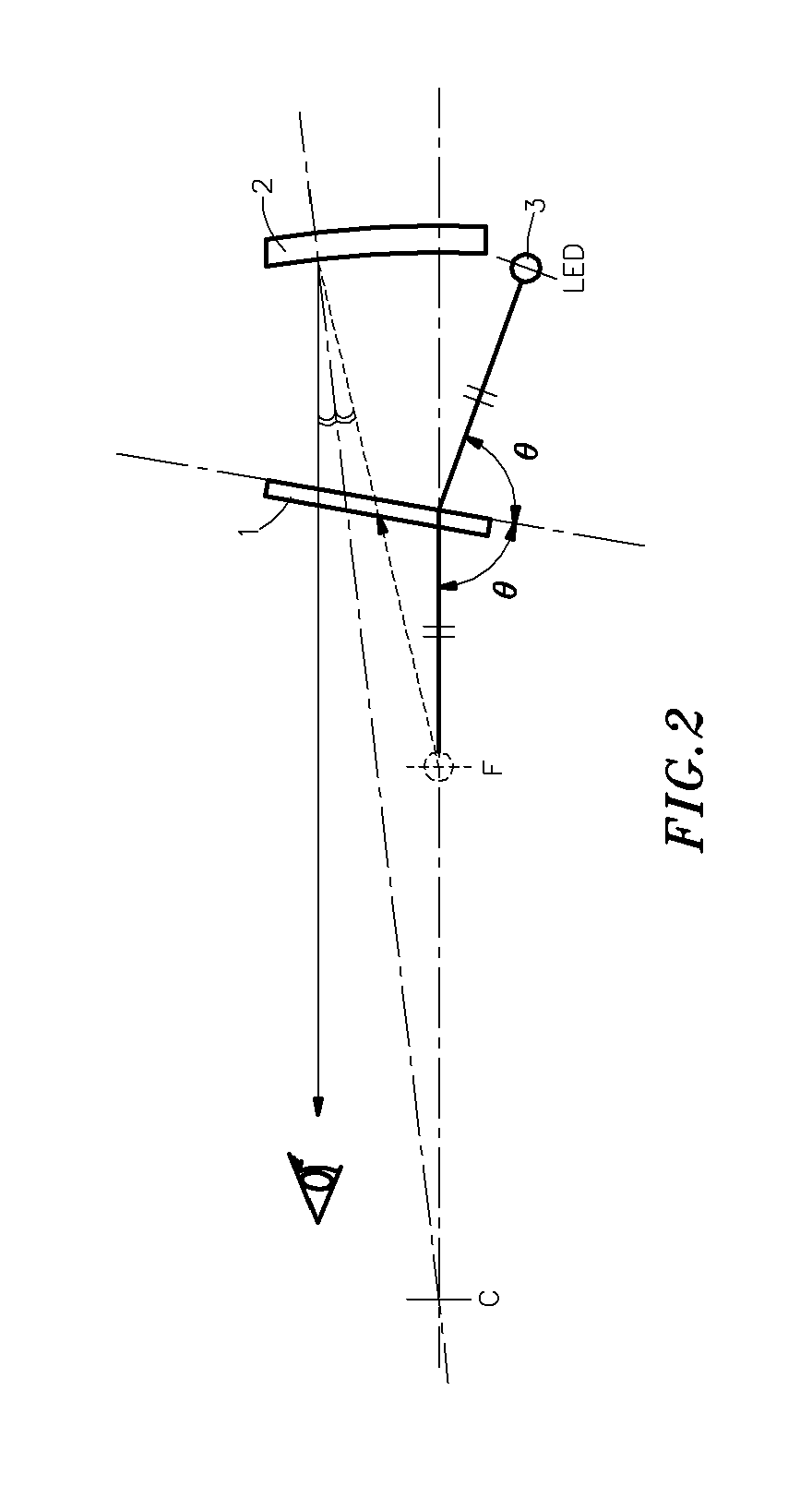Internal red dot sight
- Summary
- Abstract
- Description
- Claims
- Application Information
AI Technical Summary
Benefits of technology
Problems solved by technology
Method used
Image
Examples
Embodiment Construction
[0016] Referring to FIGS. 1 and 2, an internal red dot sight 4 is shown comprised of an eye lens 1, an objective lens 2, and a light emitting device 3 adapted to emit light in between the eye lens 1 and the objective lens 2. The eye lens 1 is a planar lens. The objective lens 2 is a concave lens. The eye lens 1 is set in a tilt angle relative to the objective lens 2. When the light emitting device 3 is operated to emit light toward the eye lens 1, the eye lens 1 reflects a point light source of the light emitting device 3, thereby forming a virtual point light source on an major axis of the objective lens 2 subject to the law that incident angle=angle of reflection. At this time, this distance between the point light source of the light emitting device 3 and the eye lens 1 is equal to the distance between the virtual point light source and the eye lens 1. Therefore, the virtual point light source is allocated at a focal point F of the objective lens 2, and a light ray is projected t...
PUM
 Login to View More
Login to View More Abstract
Description
Claims
Application Information
 Login to View More
Login to View More - R&D
- Intellectual Property
- Life Sciences
- Materials
- Tech Scout
- Unparalleled Data Quality
- Higher Quality Content
- 60% Fewer Hallucinations
Browse by: Latest US Patents, China's latest patents, Technical Efficacy Thesaurus, Application Domain, Technology Topic, Popular Technical Reports.
© 2025 PatSnap. All rights reserved.Legal|Privacy policy|Modern Slavery Act Transparency Statement|Sitemap|About US| Contact US: help@patsnap.com



